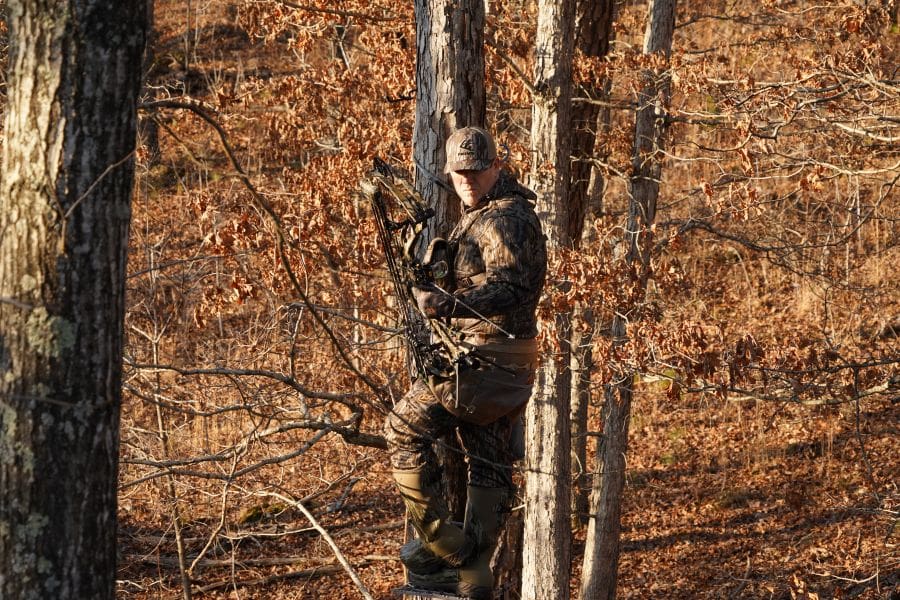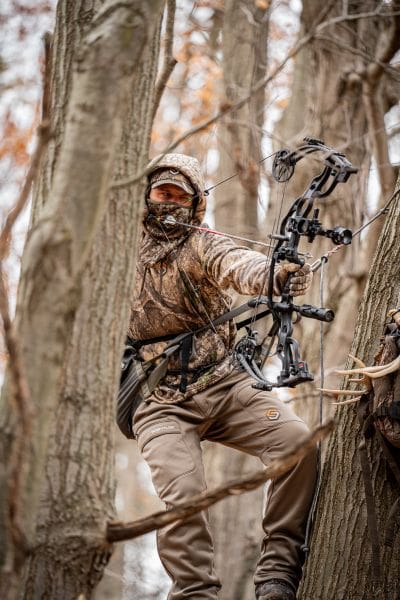As deer hunters, we’re constantly adapting, tweaking our tactics, and upgrading our gear to gain even the slightest edge. One of the most widely discussed shifts in recent years is the debate between tree saddles and traditional tree stands. I’ll admit, I’ve been trying to keep pace with the trend. A few seasons ago, I gave saddle hunting a try during archery season, and I liked it so much that I’ve since used a saddle for rifle hunts as well.
Like many newcomers to saddle hunting, I’ve come to appreciate its versatility and mobility, so much so that I often question whether I’ll return to using a treestand. The truth is, I will. While both methods offer effective elevated setups, each comes with its own strengths, limitations, and ideal situations. If you’re scouting or hunting whitetails in July, particularly while prepping for early season or running trail cameras, knowing when and why to choose a saddle or a stand can make a big difference in how and where you scout.
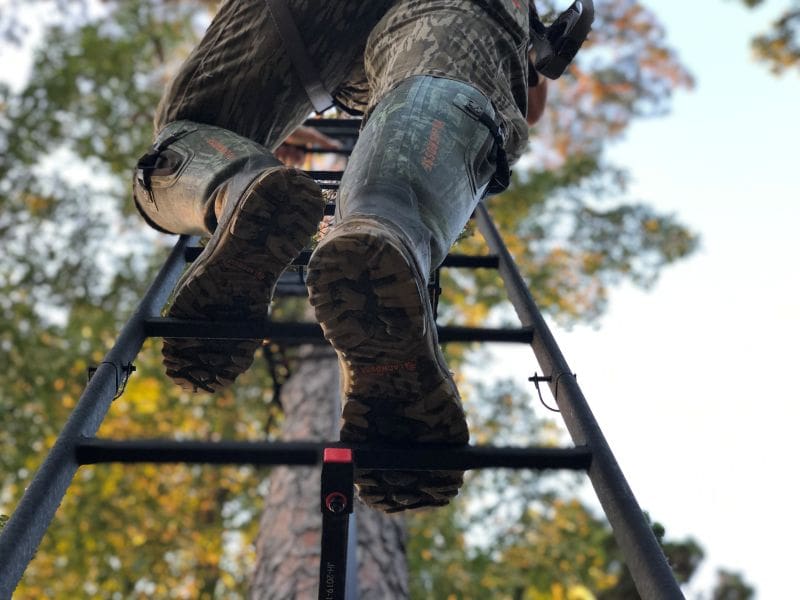
The Case for Tree Saddles
Tree saddles have exploded in popularity for good reason, they’re light, mobile, and incredibly versatile. For public land hunters or anyone putting in miles of scouting in the offseason, a saddle system is hard to beat.
When choosing the right hunting method for specific situations, it’s important to understand when a tree saddle is the better option. During July and August, most scouting efforts focus on identifying travel routes, summer food sources, and bedding areas. A saddle setup lets you travel light and climb quietly, making it ideal for observation and glassing missions. While not always the most aggressive tactic, using a saddle to gain elevation can give you a better vantage point and make your scouting more productive.
When it comes to hunting, a saddle really shines in terms of staying mobile and reacting quickly to fresh sign. It allows you to set up fast without the need for pre-cleared shooting lanes or fixed stand locations. One of the biggest advantages of saddle hunting is its lightweight, packable design, which is perfect for hunters who bounce between public land parcels or slip into remote bedding areas. With a saddle, you can hunt a spot, tear down in minutes, and move on to the next opportunity with minimal effort.
Saddle hunting also excels in thick cover and areas with irregular or crooked trees, places where traditional treestands often fall short. This is one of the biggest advantages I’ve noticed with saddle hunting. More than once, I’ve found hot sign or a spot where deer are clearly traveling and spending time, only to realize there’s no suitable tree for a stand nearby. That usually means settling for a less-than-ideal setup, slightly off the mark. With a saddle, though, almost any tree becomes an option, allowing you to position yourself exactly where you need to be.

Pros
- Ultra-lightweight (some setups are under 5 lbs)
- Increased concealment by hiding behind the tree
- Easy to transport and pack in/out
- Quieter setup if practiced
Cons
- Learning curve (especially with climbing and positioning)
- Not ideal for long sits without added comfort gear
- Requires more knowledge of the gear being used (e.g., platform, ropes, lineman’s belt, etc.)
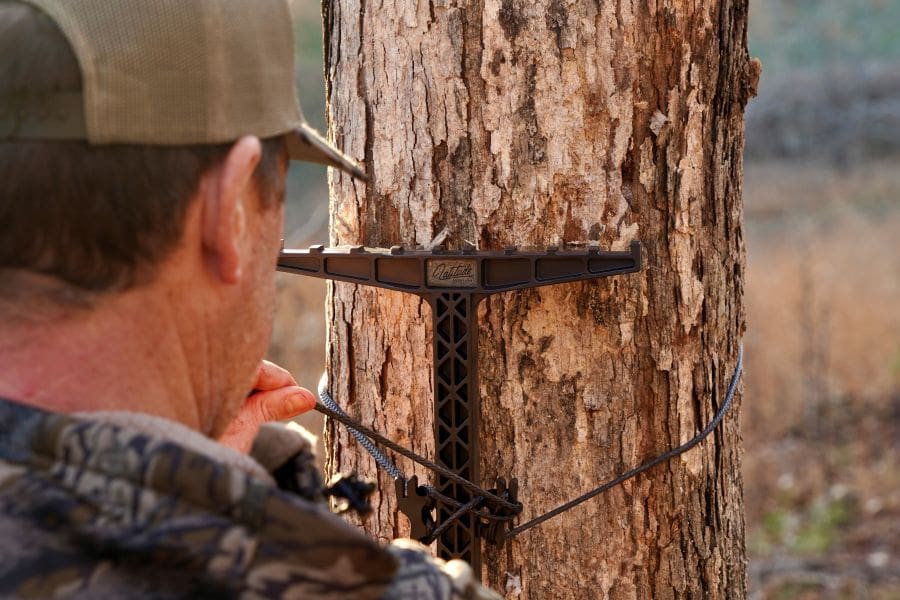
The Case for Treestands
Tried, trusted, and proven for decades, hang-on and ladder treestands still play a valuable role in modern whitetail hunting, especially on private land, for pre-season stand setups, or when planning long sits. Treestands offer excellent comfort and solid shooting stability, making them ideal for all-day hunts. They’ve stood the test of time for a reason: they simply work.
Last season, during Missouri’s firearms season, I chose to hunt from my saddle. It was peak rut with perfect weather, so I planned to sit all day if needed. After an exciting encounter with a smaller buck and several does running and chasing right beneath me, I settled in, hoping for a more mature buck. Later that evening, a mature nine-pointer appeared directly below my setup. As I shifted and turned to get into position, I accidentally grazed the buck’s front leg. The buck limped for about ten or twelve steps before noticing my movement as I tried to steady for another shot. Then, as if nothing was wrong, he bolted down a steep ravine. After hours of sitting, I’d become anxious and found it difficult to smoothly transition into my shooting stance on the platform while hanging. Had I been in a hang-on or solid platform stand, I believe I would have been more comfortable and better prepared. That experience taught me firsthand that each method has its advantages.
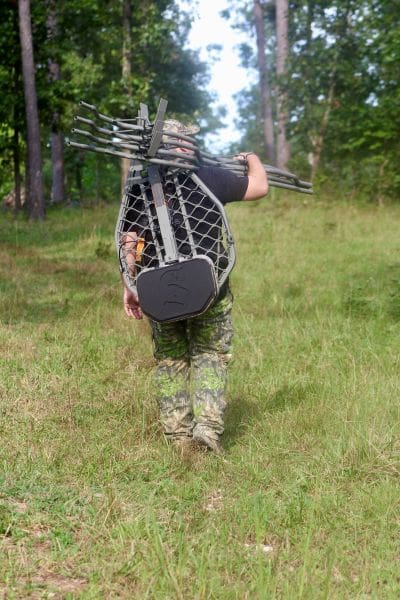
When to Use a Treestand
July is an ideal time for pre-season stand prep, especially near food plots, mineral sites, or staging areas, as deer are less pressured, and disturbances are minimal. When bucks have been patterned and their travel corridors are known, strategically placing a stand allows for quiet access and a comfortable sit. During the peak of the November rut, when all-day sits are common, having a padded seat and spacious platform can make those long hours much more manageable.
Pros
- Stable shooting platform
- More comfortable for long sits
- Easier learning curve than saddles
- Better suited for double hunts or camera setups
Cons
- Heavier to carry and hang
- More noise potential if not careful
- Limited to straight, clean trees
- Easier for deer to pattern over time
Which Is Best
The truth is, neither a saddle nor a treestand is universally better; the right choice depends on your hunting style, property layout, deer movement, and the time of year. July and August are good times to assess your gear and strategy. If you want to scout new spots efficiently or move between fresh sign during the season, a saddle provides the mobility you need. Conversely, if you’re setting up a dependable fall ambush site or want comfort for long sits, especially if you’re bringing a kid along, a treestand might be the better option. Many hunters now use both systems, switching as conditions change throughout the season. As deer behavior shifts from summer to early fall, so should your gear. Whether you’re glassing bachelor groups in July or preparing a kill tree for opening day, mastering both saddle and stand setups gives you the flexibility today’s whitetail hunting demands. In the end, it’s not just about what you use, but how you use it. Stay mobile, stay smart, and stay one step ahead of that big buck this season.
